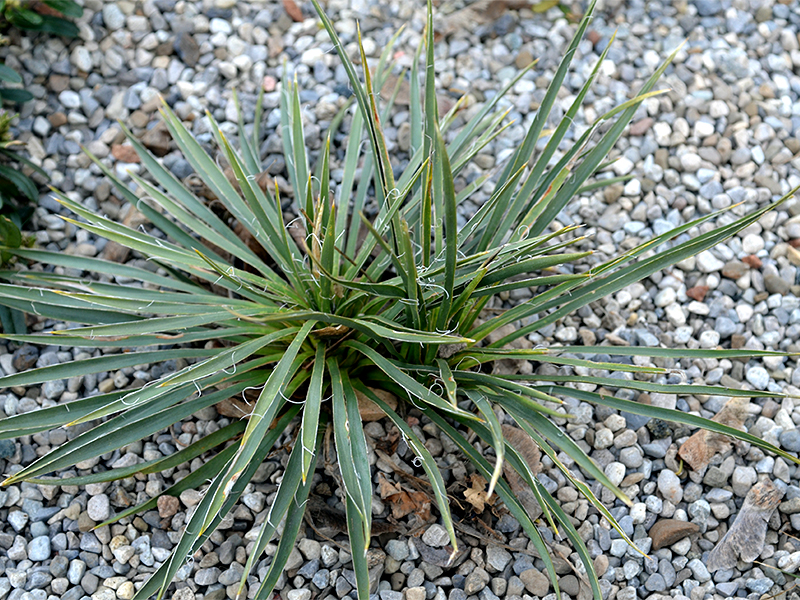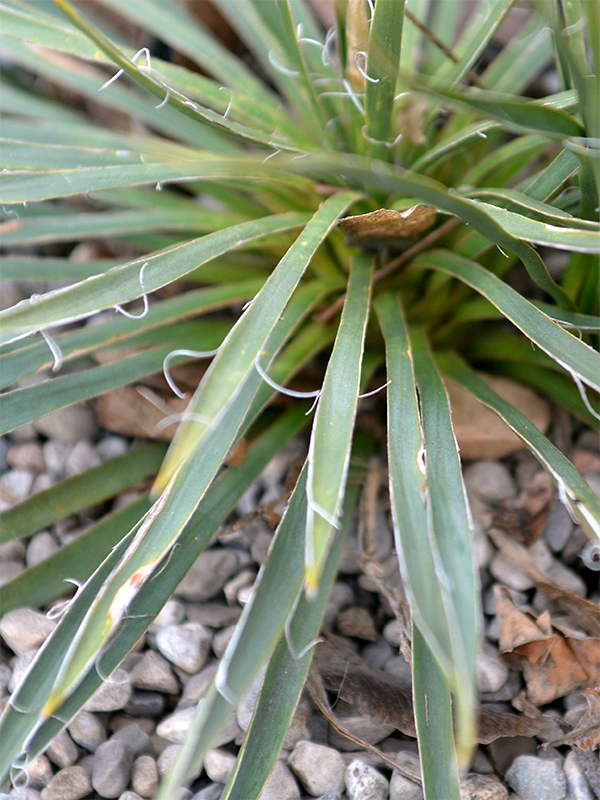
Woody > Yucca > Yucca nana > Yucca nana
Yucca nana
Dwarf Yucca
Origin: First discovered in 1998 by Fritz Hochstetler in Denver Colorado, it is currently protected from collection due to near extinction.
Mike's
Opinion


"
This plant grows laterally in rich sandy soil on slopes. It is mostly used as an ornamental in rock and grass gardens. Also does well as a potted plant and in group plantings.
Michael Pascoe, NDP., ODH., CLT., MSc. (Plant Conservation)
"
| Family |
| Asparagaceae |
| Genus |
| Yucca |
| Species |
| nana |
| Category |
| Woody |
| Type |
| Shrub (evergreen) |
| USDA Hardiness Zone |
| 5a - 9b |
| Canadian Hardiness Zone |
| 4a - 8a |
| RHS Hardiness Zone |
| H3 - H7 |
| Temperature (°C) |
| -29 - (-1) |
| Temperature (°F) |
| -20 - 30 |
| Height |
| 15 - 30 cm |
| Spread |
| 22 - 30 cm |
Photographs
Description and Growing Information
Flowering Period
| General Description |
| Yucca nana is a small, woody plant with long, fibrous leaves and edible roots. |
| Landscape |
| Great in ornamental, grass or rock gardens, in pots and on slopes. |
| Cultivation |
| Prefers well-drained, rich, sandy soils. Drought-tolerant, heat-tolerant and deer resistant. |
| Growth |
| Slow |
| ID Characteristic |
| Grows on slopes; leaves are up to 15 cm long; creamy, bell-shaped flowers. |
| Pests |
| Susceptible to cane borers, scale insects and fungal leaf spot. |
| Habitat |
| Sandy slopes in open pine woods. |
| Flower/Leaf Bud Description |
| Light green to cream-coloured, teardrop-shaped, asparagus-like in formation. |
| Leaf Description |
| Long, narrow, light green, stiff and upright, rough, bearing many fibres, clustered in rosettes up to 30 cm tall. Becoming smooth and dark green at the tip. |
| Flower Description |
| Succulent, cream coloured, 3 - 4 cm long, in central, upright cluster to 1 m tall. |
| Fruit Description |
| Dehiscent, globose to ovoid, 2 - 3 ? 3 - 4 cm, green when young, wider and woody when ripe, bearing black, flat, rugged seeds. Seeds remain viable for years until scarification occurs. |
| Notable Specimens |
| Royal Botanical Gardens, Hamilton, Ontario, Canada. |
| Propagation |
| By seed, scarified, planted 0.5 - 1 cm deep. Require fast draining soil mix as seeds are prone to rot diseases. It may take several months before they become established enough to transplant. When transplanting ensure that the plant is hardened off. Propagation can also be done by dividing rhizomes and planting them in the same way as seeds. |
| Ethnobotanical Uses (Disclaimer) |
| Edible roots. |
References
Bitner, Richard L. Designing With Conifers. Portland, London. 2011. Print.
Beck, Allison and Renwald, Kathy. Tree & Shrub Gardening in Ontario, Lone Pine. 2001. Print.

